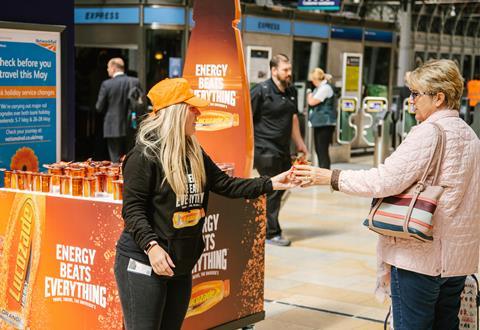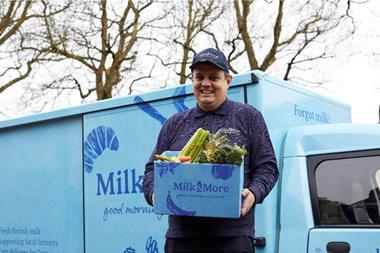
Increasing numbers of consumers in the UK and worldwide are calling on brands to be more sustainable and ethical.
When it comes to product sampling, that can pose a problem. Sampling tends to be inherently associated with unsustainability, involving cross-country travelling vans, high levels of staffing, specifically created samples, leaflets/coupons and litter.
The benefits of sampling are too high to be overlooked, though: an average of 63% of consumers sampled will buy the product within four weeks. So could we, and should we, be doing more to make this a more sustainable activity?
France has tackled the issue head on with a legislative approach. It dictates that samples must only be distributed to consumers who have requested them or opted in, removing the opportunity for wasted product and excess litter.
Despite initial pushback from brands and agencies, a year after the legal deadline in July 2022, there has been a big shift.
Companies have moved away from traditional live sampling techniques, which involve mass distribution, towards other methods. One is in-home sampling – including samples in subscription boxes and takeaways such as Deliveroo. Another is digital sampling channels, which involves targeting consumers through digital media and sending a sample once requested.
These laws have been hailed as a “massive step in the right direction” by Marie Chevrier Schwartz, CEO of digital sampling agency Sampler.
But France’s approach also creates a barrier for brands that want to hero the taste of their product and engage potential customers.
Helene Henderson, marketing manager at General Mills, believes that this kind of legislation “would be quite significant as sampling for snacks in general is quite common given the convenient and on the go nature of the product”.
Helene is right that if the UK adopted similar legislation to France, it would result in many sampling channels becoming redundant. Switching from asking if someone would like to try a product, to waiting for someone to approach and request a sample, changes the very structure of how sampling currently operates and its efficiency as a marketing tool. It would be a particular challenge for smaller brands who don’t have the existing brand awareness or marketing budgets to compete for new audiences.
So is it possible for brands to sample sustainably without such strict regulation?

As Flavor runs an integrated sampling model, we are able to see the full range of sampling approaches and channels available, as well as how each of them can embed or prioritise sustainable practices.
It would be difficult to achieve as significant an impact on sustainability without something similar to France’s blanket approach – but there are other ways to become more environmentally-friendly. That involves adjusting traditional sampling, putting in place and publishing standardised measurements, and being open to prioritising sustainability over cost effectiveness.
There are three key elements to be considered when looking at making sampling more sustainable:
Targeting
Brands could take their lead from France’s legislation by building targeting into campaigns strategically. The benefits of hyper-targeting and opt-ins go beyond sustainability, with targeted campaigns performing 23% better in driving purchase and advocacy than non-targeted campaigns.
Reducing carbon footprint per sample
As well as using recycled materials and environmentally-friendly logistics, it’s important to consider every possible means to get products into consumers’ hands.
Some sampling channels are innately more environmentally-friendly than others. An effective way to reduce the carbon footprint per sample, and ultimately be more sustainable, is to utilise the logistics of an existing service, such as Deliveroo, to send out a sample. In this instance, the carbon footprint per sample is significantly lower compared to an activation at a festival, which comes with heavy logistic requirements. We can improve the sustainability of campaigns by combining more environmentally-friendly sampling channels alongside some of the more traditional sampling methods.
Measuring effectiveness
As important as effective targeting and minimised carbon footprint is the ability to track, collate, and report on how effective the campaign is, to make sure every sample used has a positive value to go against any carbon footprint created.
It is undeniable that France’s approach is forcing brands to be more sustainable with their sampling approach, but holistically there are significant knock-on effects that could dilute the effectiveness of fmcg marketing.
The UK therefore needs to get ahead of any demand for this level of regulation by putting pressure on brands to continue their sustainability directives into their sampling campaigns and challenging agencies to provide more sustainable sampling solutions.
This approach will futureproof their brand and represent responsible action towards conserving the environment – without the need for legislation.



















No comments yet